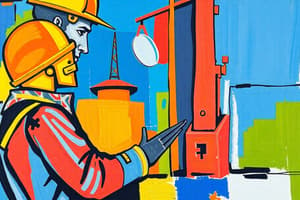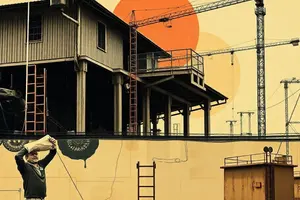Podcast
Questions and Answers
During the pre-historic period, the creation of tools primarily served aesthetic purposes rather than focusing on survival needs.
During the pre-historic period, the creation of tools primarily served aesthetic purposes rather than focusing on survival needs.
False (B)
Manual training in the 1800s primarily focused on academic subjects such as literature and history, with only minor attention given to practical trades.
Manual training in the 1800s primarily focused on academic subjects such as literature and history, with only minor attention given to practical trades.
False (B)
In the 1940s, vocational schools shifted their focus away from industrial arts, emphasizing liberal arts education instead.
In the 1940s, vocational schools shifted their focus away from industrial arts, emphasizing liberal arts education instead.
False (B)
Modern Industrial Arts education exclusively focuses on traditional craftsmanship, deliberately avoiding integration with modern technical fields like robotics and engineering.
Modern Industrial Arts education exclusively focuses on traditional craftsmanship, deliberately avoiding integration with modern technical fields like robotics and engineering.
Industrial Arts education solely benefits individual students by providing them with skills for future careers, without contributing to broader societal advancements or innovation.
Industrial Arts education solely benefits individual students by providing them with skills for future careers, without contributing to broader societal advancements or innovation.
Flashcards
Pre-historic Industrial Arts
Pre-historic Industrial Arts
Early humans created tools for survival, marking the start of practical skills.
1800s Industrial Arts
1800s Industrial Arts
Schools began offering manual training in trades like manufacturing during this period.
1900s Industrial Arts
1900s Industrial Arts
Gained popularity in vocational schools, teaching skills like auto repair and furniture design.
Industrial Arts Today
Industrial Arts Today
Signup and view all the flashcards
Purpose of Industrial Arts
Purpose of Industrial Arts
Signup and view all the flashcards
Study Notes
History of Industrial Arts
- Industrial Arts started in pre-historic times when early humans made tools for survival.
- In the 1800s, formal education included manual training for trades like manufacturing.
- In the 1900s, vocational schools became popular for students learning skills like automobile repair and furniture design.
- Today, industrial arts includes modern technical fields like robotics and engineering.
Purpose of Industrial Arts
- Industrial Arts helps students develop skills in technology, design, and manufacturing.
- Industrial Arts helps students prepare for future careers.
Why is it Important?
- Industrial Arts trains students for real-world jobs.
- Industrial Arts contributes to society's progress.
- Industrial Arts encourages innovation and creativity.
Studying That Suits You
Use AI to generate personalized quizzes and flashcards to suit your learning preferences.



